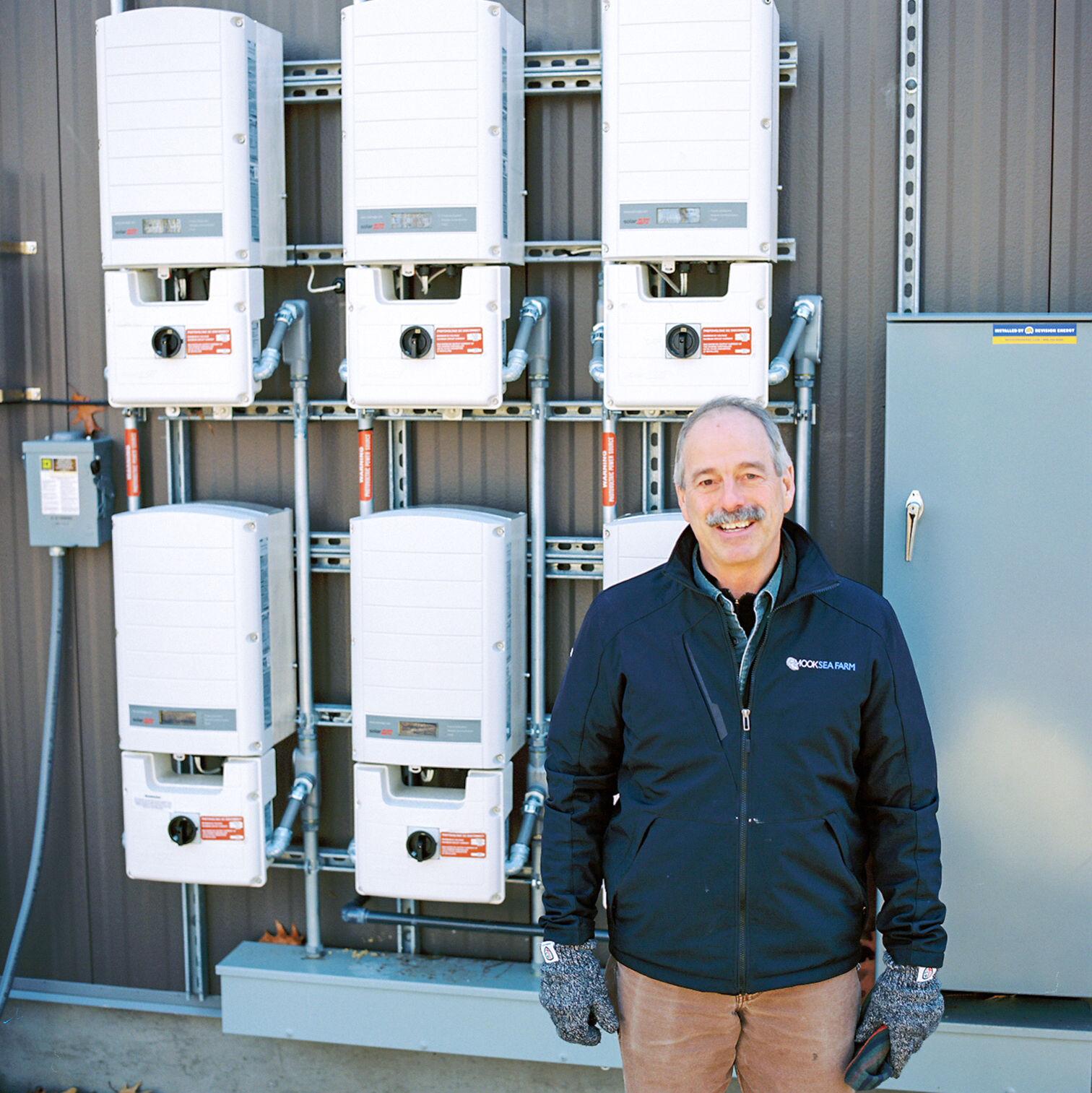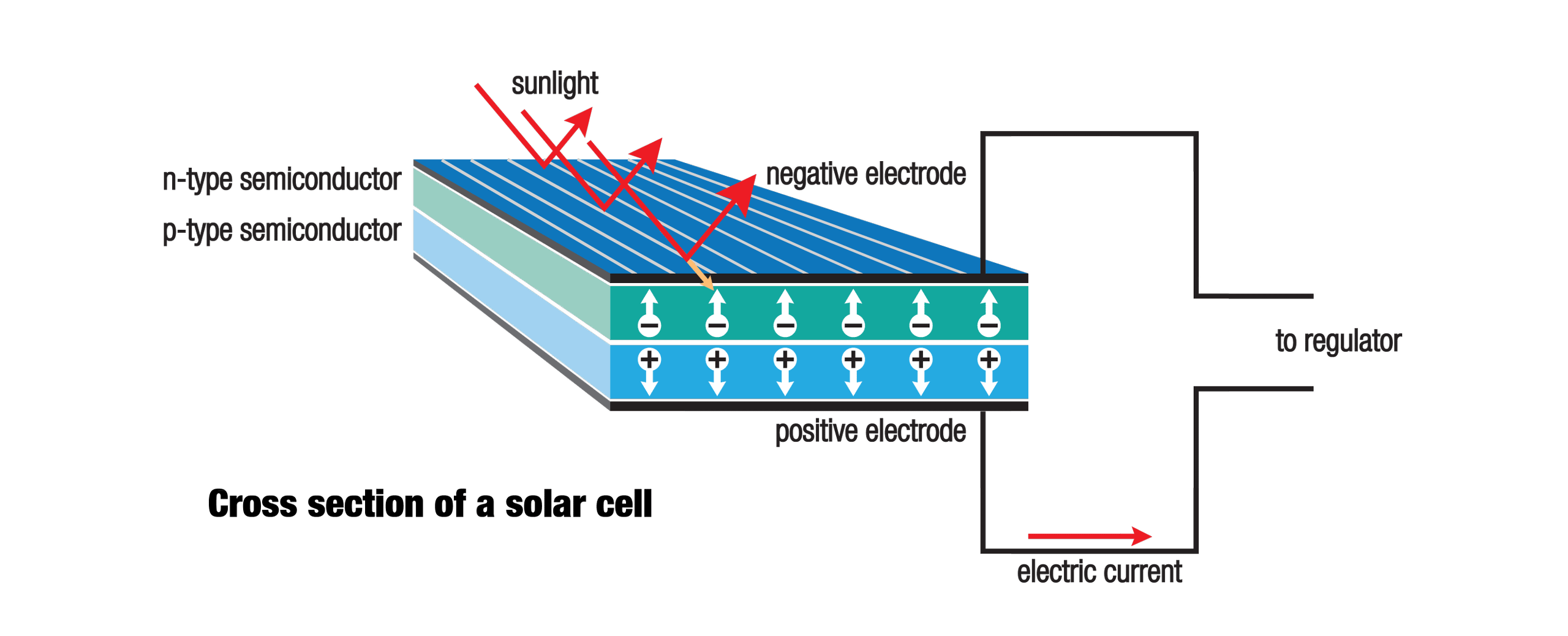 In 2018-2019, the vast majority (80% or more) of ReVision Energy's ~500 solar electricity installations will include SolarEdge inverters as the underlying technology that turns the current generated by solar panels into AC electricity that you can use in your home.
In 2018-2019, the vast majority (80% or more) of ReVision Energy's ~500 solar electricity installations will include SolarEdge inverters as the underlying technology that turns the current generated by solar panels into AC electricity that you can use in your home.
Solar inverters are rather bland looking electronics that unlock the superpowers of your solar array: generating clean energy.
More About Solar Inverters than You Ever Really Wanted to Know
When sunlight strikes a solar panel, a rather amazing electrical process happens. The electrical energy present in the light of the sun - photons - passes through a 'doped' silicon semiconductor (the 'cells' that comprise a solar panel) and knocks loose electronics from the negative side of the semiconductor, starting the flow of energy and creating a current.
Now, this is a Direct Current (DC) flow of electricity. The exact electrical properties of this DC current will vary depending on your solar array. On modern solar systems, it works out to be of significant voltage and amperage -- which means lots of energy, but not in a form that a home can do anything with.

In order to do anything useful with this DC current, it needs to be converted in Alternating Current (AC) electricity, used in all modern appliances. This is what the solar inverter does. It "Inverts" DC -> AC, and sometimes (say in a system that is designed to recharge a battery bank from the grid) it does the opposite, AC -> DC.
Why do some installers only quote Microinverters?
So, there are some solar installers who swear by microinverters and badmouth string inverters. Let's unpack that.
A solar array is comprised of many solar panels connected together in one or more "Strings." A string inverter takes the output of an entire string of solar panels, and inverts the DC energy into AC.
The string inverter design works well when solar panel outputs are closely matched, and to this day they're our preferred choice for exterior ground-mounted arrays in open fields with full solar access. However, they are not necessarily resilient in situations with partial shading. Sort of like old school Christmas lights, where if a single bulb went out, the entire set of lights would stop working -- if in a string inverter system a single solar panel is shaded, it significantly reduces the output of the entire string.
Quick aside: Modern string inverters actually deal with this issue much better than older models thanks to a technology that includes multiple Maximum Power Point Tracking (MPPT) inputs per inverter but we'll save that for the topic of another article.
Now, roughly around 2009 microinverters (predominantly by the manufacturer Enphase) entered the market. The difference with microinverters is that rather than have the 'add up the whole String into one whole' model, each solar panel was essentially its own independent system. Hence the 'micro' name.
The thinking behind this technology was that in those mixed light situations (say you have a tall oak tree that crosses your solar panels in the middle of the day) the entire solar array will be more resilient, since you'll only lose the power production of the affected modules, not crash your entire array.
While this is/was true, the promise of microinverters was also severely impacted by equipment failures in the early generations. Sort of obviously -- with a string inverter, though it may seem like "hmm you have one inverter if that goes down your whole system turns off" -- it actually proves that putting a single piece of equipment in an accessible location protected from extreme temperatures is far easier on the equipment than having them be installed on the bottom-side of solar panels, where temperatures can exceed 140 degrees Fahrenheit, as microinverters are.
While microinverters have gotten better since the early generations (and to their credit Enphase has stood behind their product and helped us help our customers who were affected by early warranty claims), the basic logic remains that having more equipment on your roof means your solar array has more points of failure.
Which brings us to the latest and greatest innovation, string inverters with module-level electronics. Or, the SolarEdge system.
Now, as we just walked through, a string inverter design is actually a very reliable way to turn a solar panel array's DC power into grid-compliant AC power. However there are some limitations, most specifically related to fire codes.
In ~2011, new fire codes were adopted across Maine, New Hampshire, and Massachusetts that created a 'rapid shutdown' requirement, meaning that a solar array that is turned off during a fire event needs to discharge power within 10 seconds. String inverters, by design, took longer than 10 seconds to shut down and thus were essentially disqualified from the North American market.
The module-level electronics in SolarEdge overcomes this. The system has all the same advantages of a string inverter (overall more efficient and the 'guts' of the system protected by being in an electronics-friendly environment) with some of the same advantages of microinverters -- the optimizers attach to each panel, and each panel can communicate to the whole for data monitoring purposes as well as fire code compliance.
Unlike microinverters, there is less 'stuff to break' with a power optimizer design.
Why do Some Solar Installers Prefer Microinverters?
Microinverters are common with some solar installers because the systems are far easier to design and install than systems with a string inverter.
Without getting too techie, strings of solar panels have to be calibrated carefully to maximize output and be matched with an appropriate inverter. Quite a bit of engineering goes into figuring out: "Hmmm which model of inverter is appropriate to go with 22 panels? Is it better for this customer if I upsize inverters to allow for future expansion, or should I overdrive a smaller inverter to save a few thousand bucks and leave less room to grow? Is it actually better to do 26 panels instead of 22 after all?"
All these questions are obviated when a solar installer simply measures a roof and figures out what they stuff onto it, and then hooks it all up to a microinverter system. Technically, that system will work, and it may work well. But it may not be the most robust, efficient, and cost-effective solution for your energy needs for 25+ years.
